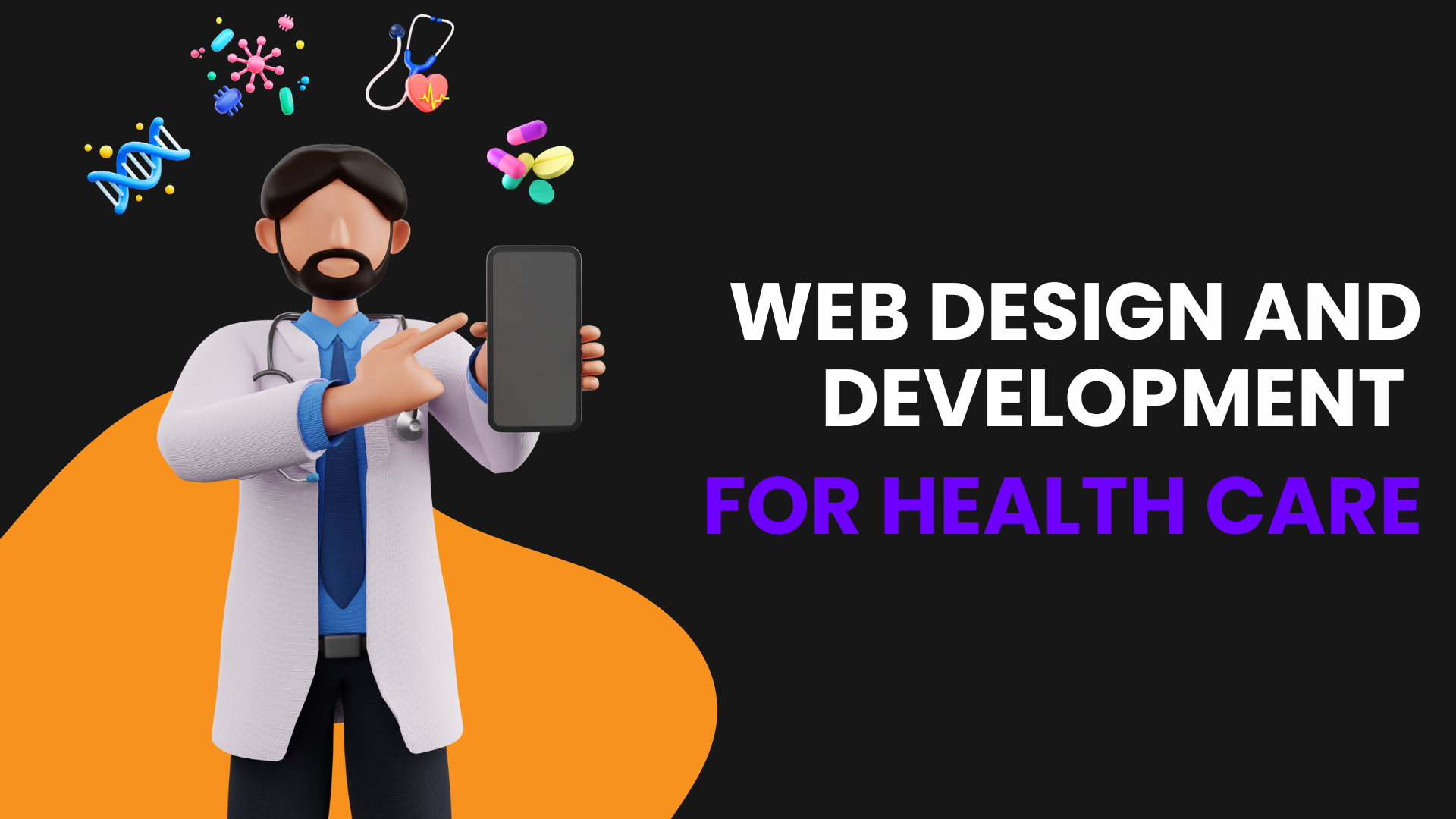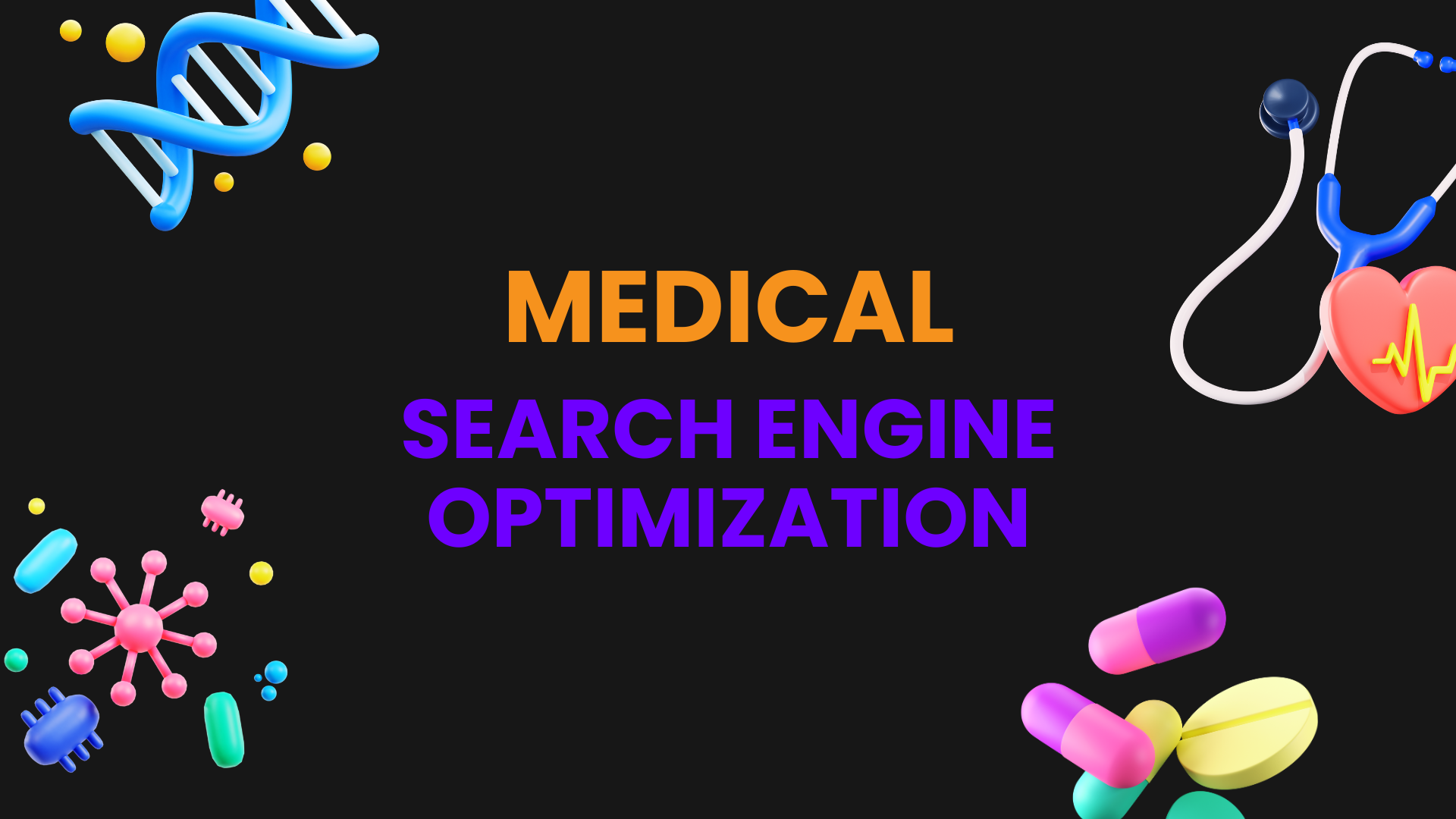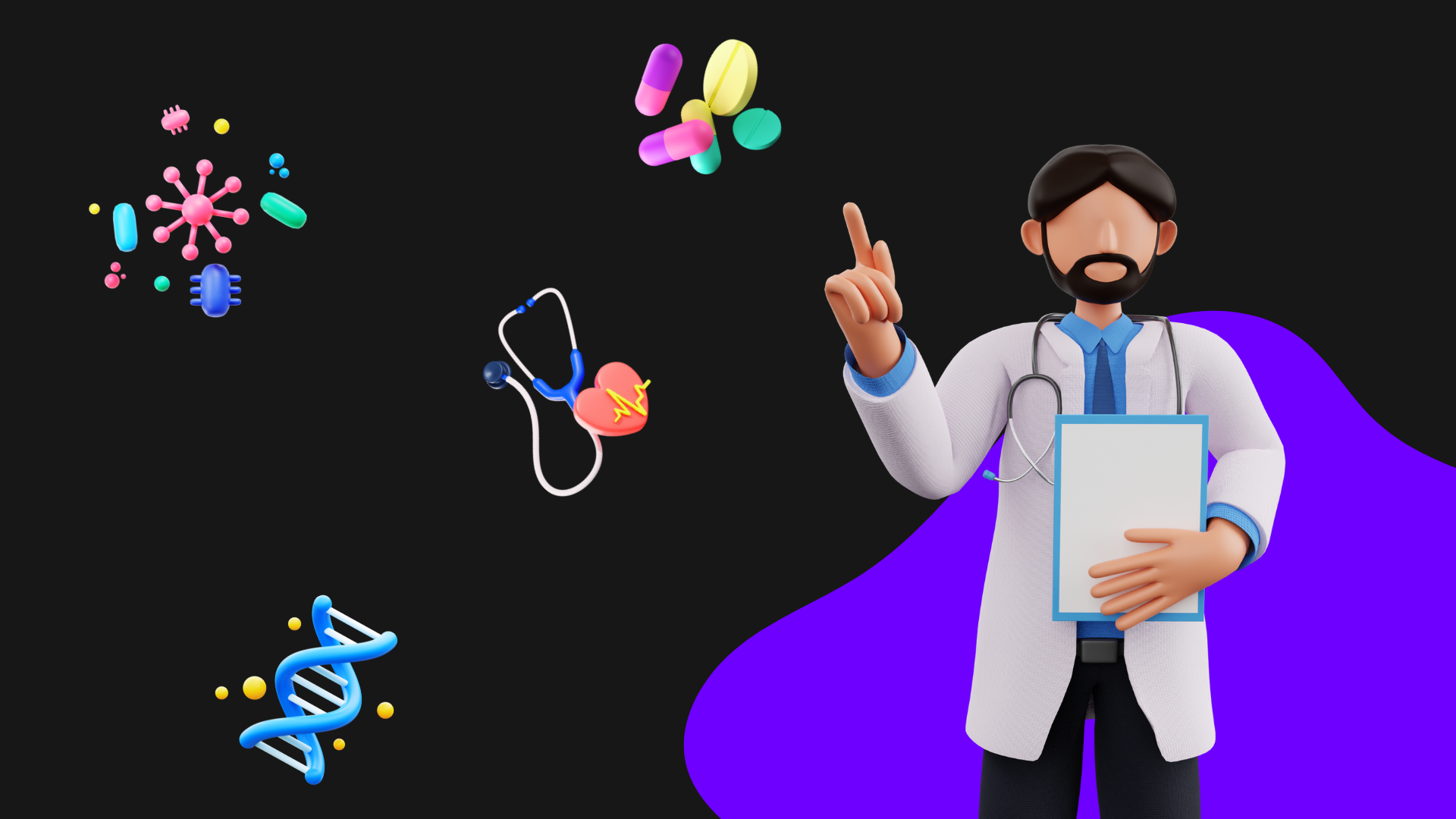Web Design and Development for Health Care
The best healthcare website design starts with a well-optimized technical part, which prepares the foundation for performance, security, and user comfort. A well-developed website guarantees flawless functionality, enabling patients to quickly access data, schedule visits, and receive tailored emails. A user-friendly and attractive design makes it easier for visitors to explore and get information. Moreover, a properly designed website builds credibility and loyalty, which is vital in a healthcare sector where patient trust rules.
Providers can create a digital presence that fulfills patient demands and maintains clinics’ credibility and medical expertise, by focusing on development and healthcare website design tips.

Goals of an Effective Medical Website
- Enhance Patient Engagement
-
Interactive tools, easy-to-navigate materials, and quick access to appointment booking and telemedicine consultations should stimulate patient activity on the website. Digital engagement makes patients feel more involved in their care.
-
- Improve Accessibility
- Making the website accessible to everyone, including disabled users, is crucial. For universal access, an effective medical website follows ADA and WCAG rules and offers screen reader compatibility, keyboard navigation, and font scaling.
- Facilitate Information Dissemination
- The web design for health care providers should provide up-to-date information, blog posts, and learning. Healthcare providers can educate patients about illnesses, treatments, mental health, and well-being by interacting openly.
- Streamline Administrative Processes
- Using online forms, patient portals, and insurance verification simplifies administrative work. This minimizes staff workload and improves efficiency, letting doctors focus on patient care.
- Boost Patient Trust and Retention
- Professionally designed medical websites with useful information and user-friendly features generate trust and target audience loyalty. Testimonials, success stories, and ongoing communication reassure patients of the provider’s competence and dedication.
- Enhance SEO and Visibility
- SEO improves visibility, making it easier for potential patients to find services. SEO standard practices include keyword-rich content and metadata to raise search engine ranks and attract new patients.
- Ensure Data Security and Compliance
- HIPAA compliance depends on patient data protection. Encrypted communications, secured logins, and frequent security audits protect patient data.
Fulfilling these goals allows healthcare providers to establish a digital strategy that meets patient requirements and organizational goals, improving service quality and accessibility.
 Web Design and Development for Health Care: How to Create an Effective Website
Web Design and Development for Health Care: How to Create an Effective Website
Importance of Security and Compliance for Healthcare Websites
Any healthcare relationship starts with patient trust. Medical professionals can guarantee patients that their sensitive data is secure using encryption and authentication mechanisms.
HIPAA compliance is necessary to avoid severe penalties, retain the provider’s legal standing, and build trust. Compliance violations can cost the company money and reputation.
A secure and compliant website reduces the risk of cybersecurity events disrupting services, improving operational efficiency. In an age of complex cyber threats, investing in security and compliance preserves patient privacy and increases healthcare provider credibility.
User-Friendly First: Healthcare Website Design Tips
Your website must be exceptionally user-friendly and clear for visitors in the competitive healthcare industry. Here are some suggestions for reaching the level of the best healthcare website designs:
- Simplify Navigation: Create an easy-to-use navigation bar for users to access services, contact information, and appointment reservations.
- Put Readability First: Clear typefaces and text sizes make materials easier to read. Adequate paragraph and section space makes content clear to understand and looks organized.
- Implement a Visual Hierarchy: Headers, subheadings, and bullet points will help to bring attention to important content. Highlight key points to stand out.
- Employ Responsive Design: A responsive web design for health care providers ensures an enjoyable experience for desktop and mobile users on different devices and screen sizes.
- Load Time Optimization: Reduce page load speeds by compressing graphics and coding efficiently to avoid user frustration and drop-offs.
- Utilize Accessible Features: Follow Web Content Accessibility Guidelines (WCAG), provide alt text for images, and enable keyboard navigation to make the website accessible to all visitors, including those with disabilities.
- Use Consistent Branding: Use similar colors, typefaces, and design components across the website to improve brand identity and professionalism.
-
Allow Feedback: To improve website usability and operation, let users give feedback and report bugs.
 Optimizing Healthcare Websites: The Crucial Role of SEO in Development
Optimizing Healthcare Websites: The Crucial Role of SEO in Development
SEO is crucial to healthcare website creation and presence. SEO helps healthcare providers increase their internet presence so potential patients and clients can find them on search engines.
Well-optimized websites rank higher in SERPs, increasing organic traffic. This requires keyword research to target patient-searched terms and phrases on websites.
SEO strategies include improving meta tags, headers, and keyword-rich content to make the site search-friendly and useful. Building quality backlinks is another important off-page SEO strategy that strengthens site authority and relevance.
The best healthcare website design is just one aspect of an effective website. Design and SEO optimization help the medical website attract and retain prospective patients.
Best Tips for Local Search Engine Optimization
Local SEO, including Google My Business listings and local keywords, is crucial for healthcare websites to attract local patients.
- Establish and Improve Google My Business: Add and verify your business on Google Business. Add current address, phone number, and work hours.
- Include Local Keywords: Content, metadata, and URLs should include local keywords to increase local search exposure.
- Use Location Pages: Create a page for each location of your healthcare provider with directions, unique services, and local provider information.
- Encourage Client Reviews: Positive Google and other directory reviews can improve local search ranks and reputation, so ask patients to leave them.
- Manage NAP Consistency: Maintain consistent NAP information across web listings and directories for enhanced local search credibility.
- Create Local Content: To attract local readers, write about local health trends and events.
- Interact on Social Media: Increase local visibility and involvement by sharing actual content and engaging with local users on social media.
- Utilize Schema Markup: To improve search exposure, use local business schema markup to tell search engines where your medical practice is located.
These SEO tactics help healthcare websites thrive by reaching and engaging a wider audience, supporting the organization’s objective to improve patient care and services.
Essential Healthcare Website Features & Trends

To ensure functioning, accessibility, and user engagement, healthcare websites must include critical features. Best healthcare website design functions include:
- System for Scheduling Appointments: An integrated online appointment scheduling system lets patients book sessions easily. This feature saves administrative burdens and enhances patient satisfaction by providing rapid confirmation and reminders.
- Access Patient Portal: Secure patient portals let patients read test results, access medical data, and contact doctors. Access to personal health information encourages patients to actively participate in their healthcare.
- Telehealth Capabilities: Telehealth is vital as remote healthcare services become more popular. Virtual consultations, remote monitoring, and video sessions improve patient access and match modern needs.
- Artificial Intelligence and Chatbots: AI and chatbots are changing healthcare websites by delivering instant and personalized service. Automated chatbots may answer basic questions, help patients navigate websites, and assess symptoms, freeing up medical staff to handle more complex issues.
These healthcare website design tips show how healthcare websites adapt to new technologies and patient expectations. By being educated and responding to these developments, healthcare companies can create websites that exceed user expectations and provide a trustworthy and engaging digital healthcare journey.
Accessibility in Healthcare: A Key to Better Patient Engagement and Care
Medical practice websites must be accessible to all users. Web developers and healthcare website designers should follow the Web Content Accessibility Guidelines (WCAG) for accessible design to integrate accessibility features successfully. Some important factors are:
- Keyboard Navigation: Keyboard shortcuts should be available for all interactive elements.
- Alternative Text: Give photos, videos, and audio files text alternatives.
- Readable Fonts and Colors: Make sure text contrast satisfies minimal threshold requirements to help dyslexia and vision-impaired users.
- The Captions and Transcripts: Caption videos and transcribe audio to make information accessible to hearing-impaired users.
- Accessible Forms: Create forms with clear labels and logical frameworks for the cognitively disabled and those using assistive technologies.
By integrating these aspects, web design for health care providers meets regulatory accessibility standards and improves user engagement and satisfaction by creating an inclusive digital environment for all potential patients.
The Role of Engaging Content for Web Design and Development for Health Care
Any successful healthcare website needs engaging content for several reasons. First, it grabs visitors’ attention and keeps them interested in exploring the website and learning more about the offerings. Healthcare practitioners may successfully communicate essential medical issues, treatments, and healthcare suggestions by presenting information engagingly and interactively, empowering users to make informed health decisions.
Engaging content connects healthcare providers to patients and potential clients. The material builds trust and establishes the supplier as a trustworthy source by answering frequent inquiries in a conversational tone. This connection is key to patient loyalty.
SEO also benefits from engaging content. Regularly updated, high-quality material raises the website’s trustworthiness. To reach their target audience and increase organic traffic, providers can use relevant keywords and address trending healthcare topics.
Creating compelling content attracts, educates, and retains visitors while supporting the healthcare provider’s aims of improving patient care and health awareness.
Synergy of Design and Development for Healthcare Websites
Engaging patients and offering high-quality service require a well-designed healthcare website. Healthcare practitioners can construct a site that improves patient experience, clinical operations, and practice trust by following these steps.
Now is the ideal moment to contact Webugol’s team of experts if you need assistance with the design and development of your medical website. Webugol designs beautiful, functional, and ADA/HIPAA-compliant healthcare websites. Our custom solutions are tailored to your specific needs, whether your goals are to increase patient involvement, boost accessibility, or create the best healthcare website design.
Schedule a consultation with Webugol today to learn how we can improve your digital presence, better serve patients, and elevate your healthcare practice.


